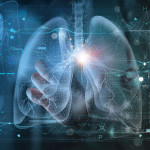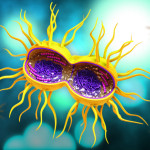Two studies published in the September issue of AIDS found poor influenza (flu) vaccine responses in people living with HIV, particularly in those with lower CD4 counts. Nevertheless, researchers still recommend that people with HIV get vaccinated annually to help maintain immune responses to the flu. The experts also suggest alternate dosing strategies to improve response rates.
The flu is nothing to sneeze at. Responses to influenza infection can range from mild stuffiness and fever to much more serious illness, including pneumonia, and even death. Pandemic flu viruses can be even more deadly, and in a wider range of individuals.
Earlier in the HIV epidemic, research found that people with compromised immune systems were at particularly high risk of developing more serious consequences from the flu. For this reason, HIV-positive people were specifically included in recommendations of who should get the flu vaccine each year. Such recommendations were also in effect during the recent H1N1, a.k.a. swine flu, epidemic.
Unfortunately, a number of studies have found that people with HIV, particularly those with low CD4 counts or high viral loads, are less likely to respond to a number of vaccines, including the flu vaccine. Vaccine responses, however, can vary a great deal across different infection-fighting cells in the body. These subtle variations have never been explored in people with HIV.
To determine how different parts of the immune system respond to influenza vaccination, Stefanie Fritz, MD, from Basel University in Switzerland and her colleagues examined the immune responses to the 2007–2008 influenza vaccine among 24 HIV-negative and 31 HIV-positive individuals.
As predicted, people with HIV had poorer responses to the vaccine overall, but there were variations in terms of the development of vaccine-specific antibodies, vaccine-specific T cell responses, and the expansion of memory B-cells from previous vaccinations or exposure to the flu.
In terms of the formation of vaccine-specific antibodies—immune molecules created by B-cells that fight only the strain of influenza virus included in the vaccine—significant increases were seen in HIV-negative individuals, as well as HIV-positive individuals with CD4 counts above 350. Vaccine-specific antibodies did not significantly increase in people with HIV who had CD4 counts under 350.
Fritz’s team also noted a similar trend in terms of vaccine-specific T cells—immune cells with the power to expand the body’s immune response to the 2007–2008 influenza virus. In this regard, 92 percent of HIV-negative participants developed a strong T cell response to the virus. In the HIV-positive participants, however, only 64 percent of those with CD4s over 350 and 22 percent of those with CD4s under 350 developed vaccine-specific T-cells.
In contrast, memory B-cell responses—cells left over from previous infections or vaccinations that the 2007–2008 vaccine caused to multiply—were high across all three groups. The authors state that this bolsters recommendations to vaccinate all people with HIV, regardless of CD4 count. The more that people can maintain memory B-cells, the more likely they are to be protected from influenza. For this reason, the authors conclude that, “[these findings] lend support to strictly enacting annual influenza-vaccination in all HIV-infected individuals regardless of their CD4 cell count.”
In a second study, Pablo Tebas, MD, from the University of Pennsylvania School of Medicine in Philadelphia and his colleagues evaluated immune responses in people with HIV to the 2009 H1N1 pandemic flu vaccine. Some studies had shown that the course of H1N1 was no more severe for people with HIV, but that HIV-positive people also had weaker responses to the H1N1 vaccine and were less likely to be protected from the infection.
Tebas’s team measured antibody responses to the vaccine in 120 people with HIV in late 2009. As in the previous study, H1N1 vaccine responses were poorer in people with HIV. Whereas greater than 90 percent of HIV-negative people responded to the vaccine in most clinical trials, only 61 percent of the HIV-positive participants in their study responded fully. After accounting for a number of factors, the main predictor of a poorer vaccine response was having lower CD4 counts.
Tebas and his colleagues argue, however, that other approaches might determine whether different dosing strategies could improve vaccine responses in HIV-positive individuals. One promising approach would be to increase the dose of the vaccine. Indeed, the authors point out that existing data hint that this might work and that two National Institutes of Health (NIH)–supported studies are currently underway to test the approach.
As the authors argued: “Alternative vaccines, dosing, adjuvants”—such as agents to boost the immune response to vaccination—“or schedule strategies are needed to achieve effective immunization of this vulnerable population.
“The 2009 H1N1 infection, though less severe than originally feared, could serve as a good model for future, potentially more deadly pandemics,” they concluded. “Lessons learned from this epidemic can, and should, be applied in the future and help in the design and development of more effective vaccines.”
Advertisement
Advertisement
Advertisement






Comments
Comments